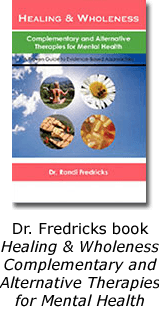Trauma and EMDR
Trauma and EMDR Therapy
San Jose Counseling and Psychotherapy
 Unfortunately, the great majority of us experience multiple traumatic events and some type of abuse in our lifetime. Fortunately, the use of PTSD treatment in psychotherapy is a practice designed to help.
Unfortunately, the great majority of us experience multiple traumatic events and some type of abuse in our lifetime. Fortunately, the use of PTSD treatment in psychotherapy is a practice designed to help.
As a compassionate and caring psychotherapist, I’ll gently, kindly, patiently, engage with you and empower your healing around whatever trauma you have experienced. Here’s a summary of how.
The goal of trauma counseling is to help you to you regain your strength to meet the challenges ahead.
Trauma and Abuse Counseling
I provide the ongoing psychological support most clients need to remain motivated and committed to the work necessary to heal and recover from trauma.
With my support, clients experience the synergistic effects of targeted therapies and services, and together bring about positive change. The areas I see trauma experiences from most often include the following listed below.
- Sports and Accident Related Trauma
- Marital Conflict
- Parenting Challenges
- Physical Assaults
- Domestic Violence & Sexual Assaults
- Employment Crisis
- Chronic and Terminal Illnesses
I know as a psychotherapist through personal experience as an injured athlete challenged by a protracted recovery, how to surmount obstacles that prevent us from participating in sports and other activities we hold so dear.
After years of professional experience working with survivors of domestic violence, sexual assault, addiction, and their family members, my practice is build upon a shared psychotherapist/client understanding of the client’s needs.
After assessment, a custom designed somatic and psychological therapy plan is created with the goal of building core strength of body and mind. Developing and applying this strength in life is the key to client recovery.
How EMDR Therapy Helps Trauma and Abuse
 EMDR (Eye Movement Desensitization and Reprocessing) therapy can be a highly effective treatment for trauma and abuse, helping individuals process and integrate traumatic memories, reducing emotional distress, and fostering a sense of safety and well-being.
EMDR (Eye Movement Desensitization and Reprocessing) therapy can be a highly effective treatment for trauma and abuse, helping individuals process and integrate traumatic memories, reducing emotional distress, and fostering a sense of safety and well-being.
EMDR is a form of psychotherapy, specifically designed to help individuals process traumatic memories and reduce the emotional distress associated with them. It involves focusing on a distressing memory while simultaneously engaging in bilateral stimulation, typically eye movements or tapping, which helps to reprocess the memory and reduce its impact.
EMDR therapy is effective for various mental health conditions, including post-traumatic stress disorder (PTSD) and other trauma-related issues. Studies show it can effectively reduce or eliminate symptoms in many individuals.
Here’s how EMDR helps with trauma and abuse:
- Bypassing the Brain’s “Freeze”: EMDR’s bilateral stimulation (e.g., eye movements, tapping) is believed to bypass the brain’s “freeze” response, which can occur when trauma is experienced, preventing the left side of the brain from calming the right side.
- Reprocessing Memories: During sessions, clients focus on specific aspects of their traumatic memory while engaging in bilateral stimulation. This process helps the brain process the memory in a way that leads to a more neutral and adaptive understanding.
- Emotional Regulation: EMDR can help reduce the intense emotions associated with traumatic memories, such as fear, anger, shame, and anxiety.
Building Adaptive Beliefs and Challenging Negative Thoughts: EMDR helps clients identify and challenge negative beliefs that may have arisen as a result of the trauma, such as “I am not safe” or “I am to blame”. - Developing Positive Beliefs: Therapists work with clients to develop and integrate more adaptive and positive beliefs, such as “I am safe,” “I am worthy,” and “I have the power to choose”.
- Integrating the Trauma: EMDR can help individuals connect with and process the difficult aspects of their trauma, allowing them to fully acknowledge and integrate the experience.
- Releasing Stored Energy: By engaging with both the mental and physical aspects of trauma, EMDR helps clients release stored energy and tension, which can contribute to physical symptoms and emotional distress.
- Re-establishing Connection: EMDR can also help individuals re-establish a sense of connection with good people and positive experiences in their lives, which can be crucial for healing from trauma.
Recovering From Trauma and Abuse
Children survive with whatever resources they have and do the best they can. Once they reach adulthood, trauma survivors have the power to change if they choose to do so. Help and support are available. Not all coping skills are harmful. Some of the ways we use to survive may have developed into strengths to celebrate, such as:
- Being self-sufficient
- Sense of humor
- Good in a crisis
- Resiliency
- Successful at work
- Nurturing spirit
- Compassionate
If there are problems you are struggling with that you want to be different, know that change is possible. Here are some basic steps to making changes:
- Become aware of the behavior you want to change
- Look a why that behavior developed in the first place
- Have compassion for what you’ve done in the past
- Find new ways to meet your needs
- Make several tries
- Be persistent
- Get support
With my unique set of qualifications as a psychotherapist, I provide a unique PTSD treatment with healing and recovery from trauma that involves mind, body and spirit. I begin with an intake session to assess what treatments are best suited for you.

San Jose PTSD Treatment in the Silicon Valley including San Jose, Los Gatos, Saratoga, Sunnyvale, Campbell, Cupertino, Los Altos, Mountain View, and Santa Clara.





